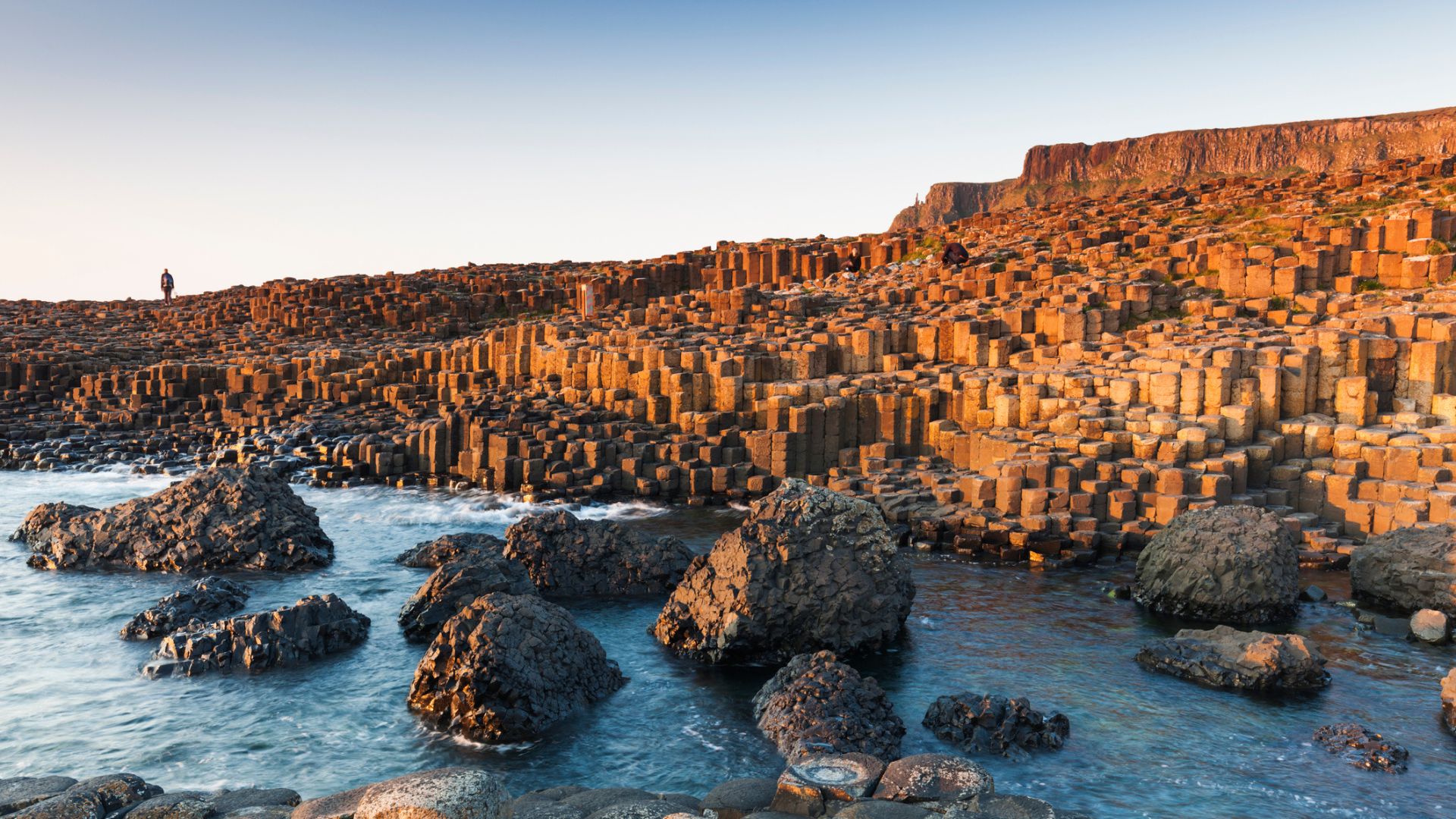"Leave no trace" – visitors to Northern Ireland's iconic Giant's Causeway urged to stop jamming coins into the ancient rocks
The coins, that tourists leave behind for love or luck, are having a devastating impact on the world-famous heritage site

It attracts nearly 700,000 visitors each year. But Northern Ireland's Giant's Causeway, part of an iconic hiking route along the exposed Northern Ireland coast, is being irreparably damaged by visitors who are stuffing coins into gaps in the distinctive basalt columns.
Like tourists who left padlocks on the Pont des Arts bridge in Paris, people are copycatting others to the point where the coins are changing the face of the rocks, which are one of the most famous natural resources in Northern Ireland.
Now the National Trust, which manages the UNESCO World Heritage Site, is urging visitors to "leave no trace" as the coins are staining the rocks and causing them to crumble.
Dr Cliff Henry, nature engagement officer with the National Trust, revealed: "On a geological timescale, this is very rapid erosion."
Following a report from the British Geological Survey, he explained that: "Fracturing and disintegration of the basalt rock adjacent to joints and cracks into which coins have been inserted is the result of the ‘expansive delamination of the coins upon oxidation’.
“In other words, the coins are rusting, and expanding to three times their original thickness, which puts huge pressure on the surrounding rock, causing it to crumble. Unsightly streaks of copper, nickel and iron oxides are also staining the stones where the coins are corroding.”
He revealed that in trying to force coins into the cracks people are using stones from the ground as hammers, sometimes missing and chipping the stone itself.
All the latest inspiration, tips and guides to help you plan your next Advnture!
The removal of coins is expected to cost the National Trust more than £30,000 ($40,500).

Giant's Causeway, on the Atlantic Ocean, was created by an outpouring of basalt lava 60 million years ago around the time the North Atlantic was opening up as Europe was starting to rip away from North America. Approximately 40,000 interlocking basalt columns now remain.
However, one legend has it that it was formed by Irish giant Finn McCool. It's said he created a causeway to get across the Irish Sea to face his rival, the Scottish giant Benandonner, who tore up most of the causeway to prevent Finn from getting back to Scotland.
“We know that visitors really love and cherish the Giant's Causeway, and many form deep personal connections to this special landscape," Henry said. "We know some may want to leave a token of their visit, but the coins are causing damage and we are urging people to stop the practice and to leave no trace so this natural wonder remains special for future generations.”
Leave no trace
Leave No Trace is an initiative, originally spearheaded by a charitable organization in Colorado, that provides proven, research-based solutions for the protection of the natural world. Its roots are in backcountry settings, but the principles can be applied anywhere – from remote wilderness areas to local parks.
One of the seven principles is 'Leave what you find', which includes preserving the past by observing cultural or historic structures and artifacts and not touching them, and leaving rocks, plants, and other natural objects as you find them.
Other principles include:
- Plan ahead and prepare
- Travel and camp on durable surfaces
- Dispose of waste properly
- Minimise campfire impacts
- Respect wildlife
- Be considerate of other visitors
Read more in our article on how to leave no trace.
- Keep warm on blustery coastal walks with the best windbreakers
- Take your trash home with you in one of the best hiking backpacks

Charlie is a freelance writer and editor with a passion for hiking, biking, wild swimming and active travel. She recently moved from Bristol to South Wales and now refuses to leave her front door without one of the following: lightweight hikers, wetsuit, mountain bike, tent. Having bought a fixer-upper home that backs on to protected woodland, her love of nature and wildlife has intensified and the dark skies have kickstarted a new fondness for stargazing.
